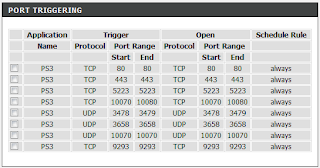It's been a while since I posted, and I apologise to those people who do actually check this blog out now and then. Thanks to the ever excellent
Google Analytics I know there's a few loyal souls out there.
One of the things that's been keeping me busy lately is my newest project,
ThriftShelf. I buy a lot of books online and it occurred to me that there aren't too many options if you want to compare prices. Checking each website manually is tedious, especially since some will present prices in your currency, while some show prices in their home currency (e.g. US Dollars). Some show prices inclusive of delivery, while other are exclusive of delivery, and some don't show you how much delivery will cost (usually a significant proportion of the price) until you're ready to check out.
To me this is the kind of structured problem that just begs for automation because it's:
(a) a waste of time to check each website manually when shopping. The whole point of technology is to liberate human beings from boring, monotonous tasks like shopping around for prices; and
(b) it's a problem that's structurally ideal for a technological solution.
Okay, so how does it work?
A few simple steps:
1. Enter a search term. For example, "harry potter".
2. Choose from a list of possible results. In our example, you'd get the different Harry Potter books, plus a collector's set, some books related to the Harry Potter universe, and some academic books comparing Harry Potter to Jesus (yes, you read that last bit right).
3. Pick the book you want. The site then fetches prices from several well-known online merchants (Amazon, Better World Books and Book Depository are in there), converts all prices to the same currency, calculates delivery cost (where necessary) and sorts the totals from cheapest to most expensive.
The currency and interface language used are chosen to best fit the country in which in the user is visiting from, and delivery prices are correctly calculated for their location. Currently, the UI is available in five languages (English, French, German, Spanish and Portuguese), and over twenty currencies are supported.
4. Finally, you then click the orange big button to be taken to the cheapest merchant's site. There's also the option to pick one of the other merchants in case you don't like the cheapest.
So when can you start using it?
The short answer is right away. The long answer is that the site is undergoing testing and there are still some tweaks needed and some SEO that needs to be done. The site launches officially by the end of the month.
Of course, like any website, it's never really done. Future plans include more merchants, games and films, and more features which will be revealed at a later date. Have fun!




